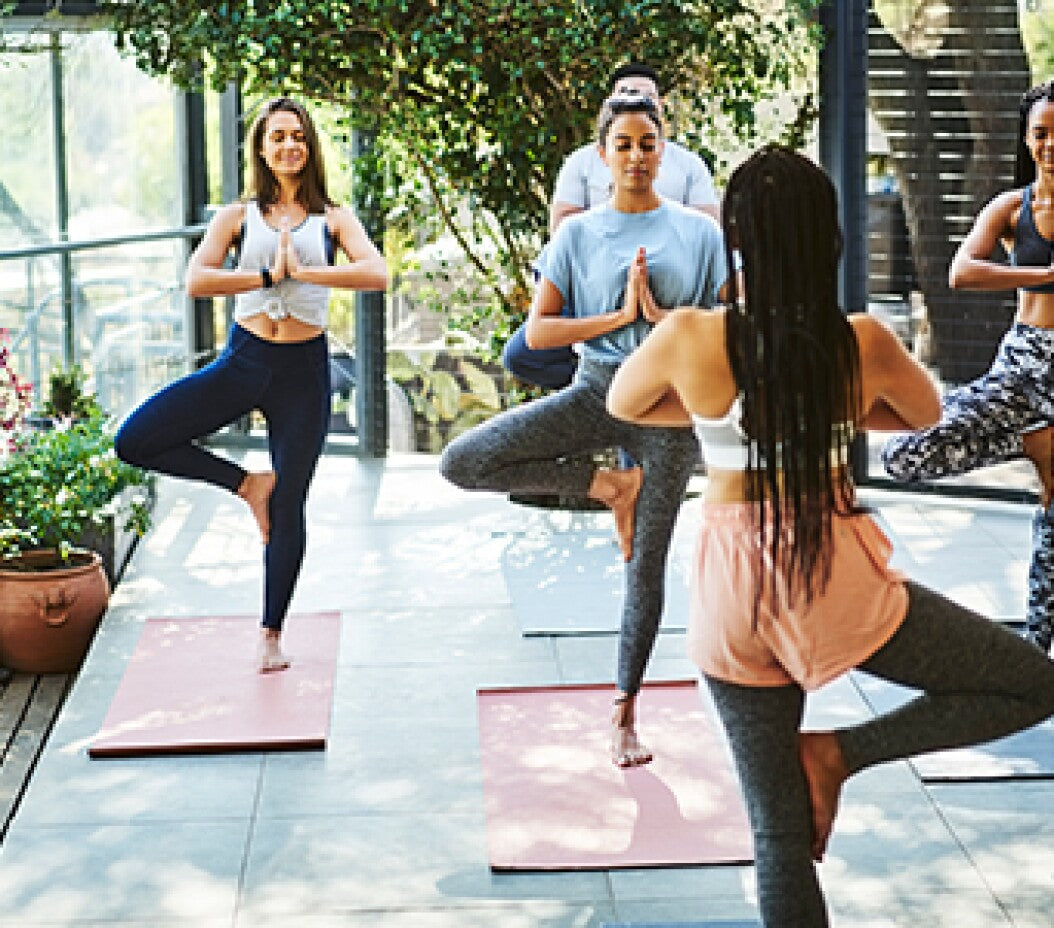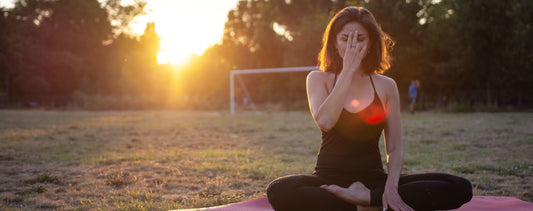In yoga teacher trainings around the globe, aspiring yoga teachers learn creative ways to use their spoken words to guide students into physical postures and into various states of relaxation. A yoga teacher can guide a student to step forward into a lunge pose, balance on one foot, and twist their arms in such a way that they become an eagle! Some yoga instructors hope to empower students with carefully chosen quotes by inspiring leaders. And some yoga instructors share mantras and music with lyrics meant to motivate. All with the power of words; language is meaningful. In a yoga class, the teacher is often the only person speaking. With this power, comes tremendous responsibility.
Because the words spoken by a yoga teacher are so influential, it is of utmost importance that the teacher chooses them mindfully.
This kind of compassionate connection begins before your yoga class even starts. In the book Skill in Action: Radicalizing Your Yoga Practice to Create a Just World, yoga teacher Michelle Cassandra Johnson explains that this requires your own practice of “yoga, meditation, and centering, which allows [you] to show up more fully for others.” Johnson says, “The skill of centering, preparing, being present and listening creates an environment that feels safe to others. People feel held and seen in a space they are able to show up, as they truly are, the messiness and the beauty. A space where others can show up as they truly are requires me to be authentic and vulnerable.”
In addition to using inclusive language, there are several other things you can do to show up as an ally for your LGBTQIA+ students. As a yoga teacher, students will likely look to you as an example, and not only as a model for demonstrating yoga asana. Use your influence to show your clear support of the LGBTQIA+ community. Students will look to you to see what:
Though in the grand scheme of social justice work, the words you choose to use in a yoga setting may seem small, this does not make them insignificant. Yoga was always meant to be a practice for change and transformation. When you curate your classes to be intentionally inclusive, accepting, welcoming, and empowering, you lift others up. You raise the collective vibration by creating a safer space for even one person to calm their nervous system. Your small act can have a big impact for your LGBTQIA+, QPOC (queer people of color), and non-binary students. Yoga teachers, be the change. Use your words!
Discover the simplest, most effective way to cultivate calm and well-being—so you can help others find peace as well—with Breathwork, our self-paced online course. Learn More.
Because the words spoken by a yoga teacher are so influential, it is of utmost importance that the teacher chooses them mindfully.
Connect Compassionately
LGBTQIA+ stands for lesbian, gay, bisexual, transgender, queer/questioning, intersex, asexual/ally, and (+) other non-traditional sexual identities, such as pansexual, androgynous, and two-spirit. Though you may get to know some of your students on a more personal basis, because gender expression and sexual identity are personal, it is likely that you will not know your students’ orientations or preferred pronouns. It is your role and responsibility as the teacher to do everything in your power to create a space that is intentionally safe and welcoming to all. The teachings of yoga are well-suited to this compassionate and mindful approach to teaching language. This approach fits in easily with the themes of courage, connection, peace, and unity often seen in modern-day yoga classes.This kind of compassionate connection begins before your yoga class even starts. In the book Skill in Action: Radicalizing Your Yoga Practice to Create a Just World, yoga teacher Michelle Cassandra Johnson explains that this requires your own practice of “yoga, meditation, and centering, which allows [you] to show up more fully for others.” Johnson says, “The skill of centering, preparing, being present and listening creates an environment that feels safe to others. People feel held and seen in a space they are able to show up, as they truly are, the messiness and the beauty. A space where others can show up as they truly are requires me to be authentic and vulnerable.”
Be Intentional
Then, as you prepare to teach, greet everyone. Learn your student’s names. Ask again if you forget. Before you teach, set the intention of ahimsa, non-harming. And then, go beyond not harming: Seek to hold a space of solace and healing for your students. For teachers and management newer to this kind of intentional work, a good place to start is by attending a trauma-informed teaching workshop or training. In the book Overcoming Trauma Through Yoga: Reclaiming Your Body, the authors (a yoga teacher and medical doctor) explain, “A trauma-sensitive yoga practice can provide a structured approach that helps foster our internal sense of safety, personal agency, and choice, and that cultivates our capacity for self-awareness and self-regulation.” If you hope to provide a practice where your students can relax, let go, and be present then you must continually do your own reflective, healing work. Practice what you teach.Start Here
Here are some ideas for language to use to help facilitate an inclusive yoga space during a yoga class. This list is not comprehensive, but rather a place for you to start. May this be the start (or hopefully a continuation) of conversations with fellow teachers, students, clients, studios, managers, family, and friends.- At the outset of the class and during the class, say: “All of you are welcome here,” “Come as you are,” and “Celebrate who you are.” Shame, grief, joy, fear, anger, delight, and any number of mixed emotions are expected to arise during a yoga practice. Reminding students that this is allowed—and welcome—goes a long way. The yoga mat might be the perfect place for your students to process and move emotions through the body. Similarly, reminding students that they are perfect just the way, size, shape, and color they are is no small thing, especially in a society that constantly tells you that you are not. Remind yourself of that as well!
- Refer to the class as “everyone,” “friends,” “family,” and/or “y’all.” Rather than saying “you guys” or “ladies,” rather than saying “he” or “she,” as the yoga teacher you can simply say “you.” Leave gender pronouns out of your greetings and cueing to create an open environment where all are included.
- When cueing parts of the body and directions, use “your . . . ” Instead of saying, for example, “stretch the right arm up” or “tilt the ear to the shoulder” you could say “stretch your right arm up” or “tilt your ear toward your shoulder.” Many students practice with some level of detachment from their own body; this may be especially true for students who have experienced trauma.
- Unfortunately, LGBTQIA+ folks are at a higher risk of experiencing trauma during their lives, such as hate crime, family estrangement, social isolation, and anti-LGBT politics. Inviting students to identify with their own lived experience in the physical present can help students reclaim their bodies and heal.
- In the same vein, share your own experience during the practice to model curiosity, present moment awareness, and self-inquiry. Rather than telling students how they should feel or expect to feel in a pose or practice, give examples to allow them to name their own experience. You could say, “for me . . . ” or “in my body . . . ” and then give language to the sensations you are feeling. For example, “take a moment to notice how your left foot feels after that pose. For me, my left foot is feeling a bit tingly and warm.” Allow students time and space to notice, observe, feel, and get curious about what is going on in their bodies.
- Always ask for consent before offering hands-on adjustments. You could say this at the outset of the class: “I like to offer hands-on adjustments throughout practice. If you prefer not to be touched today, for any reason, give me a little wave now and I’ll know to skip you.” You could say this before offering an individual adjustment: “Would you like to be adjusted in this pose? Let me know by saying yes or no.” Or you could use a non-verbal system, such as a small token or mat accessory, to allow students to communicate their preference. Make sure students know that it is absolutely okay for them to say “no, thank you” to your offer for an adjustment. Getting consent for adjustments in your classes is non-negotiable.
- If you mess up: Apologize and do better next time. It is likely that at some point in your life in your role as a yoga teacher (or as a human being) you will make a misstep. There may be a day when you say something while you’re teaching that offends someone. Perhaps you misgender someone, use an incorrect personal pronoun (he/she/they), or offer a cue that does not land (for example, calling happy baby pose “happy boyfriend pose” is triggering and should be stricken from any yoga teacher’s vocabulary immediately).
- If a person or group has been courageous enough to let you know that your words have affected their yoga experience, say, “Thank you for sharing your experience with me. I’m so sorry my words impacted your yoga experience in a negative way. I will do better next time.” If you aren’t sure how to do better, ask, research, keep practicing, and keep learning.
In addition to using inclusive language, there are several other things you can do to show up as an ally for your LGBTQIA+ students. As a yoga teacher, students will likely look to you as an example, and not only as a model for demonstrating yoga asana. Use your influence to show your clear support of the LGBTQIA+ community. Students will look to you to see what:
- Yoga clothing to buy: Wear clothes made by companies that use eco-friendly material and practice sustainability.
- Water bottles to purchase: Bring a reusable water bottle made from sustainable material.
- Ally-ship can look like: Display rainbows and equality symbols where they are visible.
Though in the grand scheme of social justice work, the words you choose to use in a yoga setting may seem small, this does not make them insignificant. Yoga was always meant to be a practice for change and transformation. When you curate your classes to be intentionally inclusive, accepting, welcoming, and empowering, you lift others up. You raise the collective vibration by creating a safer space for even one person to calm their nervous system. Your small act can have a big impact for your LGBTQIA+, QPOC (queer people of color), and non-binary students. Yoga teachers, be the change. Use your words!
Discover the simplest, most effective way to cultivate calm and well-being—so you can help others find peace as well—with Breathwork, our self-paced online course. Learn More.






















